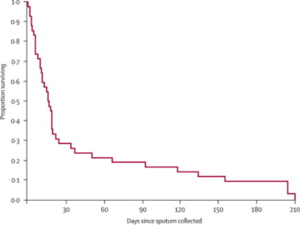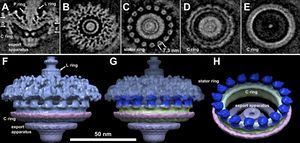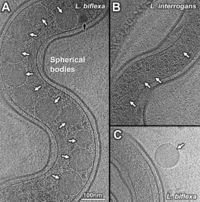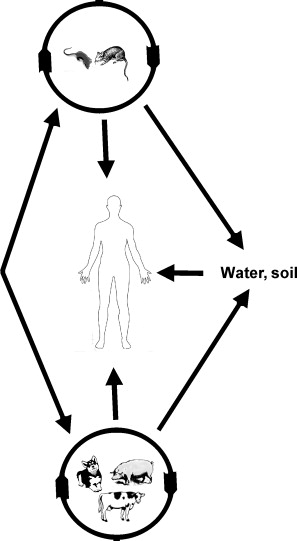Leptospira Species in the Environment: Difference between revisions
From MicrobeWiki, the student-edited microbiology resource
No edit summary |
No edit summary |
||
| Line 5: | Line 5: | ||
[[Image:Flagellamotility.jpg|thumg|300px|right|Figure 3.Molecular architecture of the intact flagellar motor of Leptospira spp.(A) Centered section parallel to the direction of the filament of an assymetric reconstruction of the Leptospiral motors. Panels B, C, D and E are horizontal cross sections | [[Image:Flagellamotility.jpg|thumg|300px|right|Figure 3.Molecular architecture of the intact flagellar motor of Leptospira spp.(A) Centered section parallel to the direction of the filament of an assymetric reconstruction of the Leptospiral motors. Panels B, C, D and E are horizontal cross sections.]] | ||
Revision as of 00:57, 23 April 2014
Introduction

Figure 2.The outer membrane (Om), inner membrane (IM), peptidoglycan layer (PG), and periplasmic flagellum (PF) in a 3-D reconstruction of intact L. interrogans (A) and L. biflexa (B).Zoom-in views reveal the detail of the cell envelope of L. interrogans (C) and L. biflexa (D). Panels E and F show the density profiles of L. interrogans and L. biflexa, respectively.
By Toni Miller
Introduce the topic of your paper. What microorganisms are of interest? Habitat? Applications for medicine and/or environment?
Section 1
Include some current research, with at least one figure showing data.




